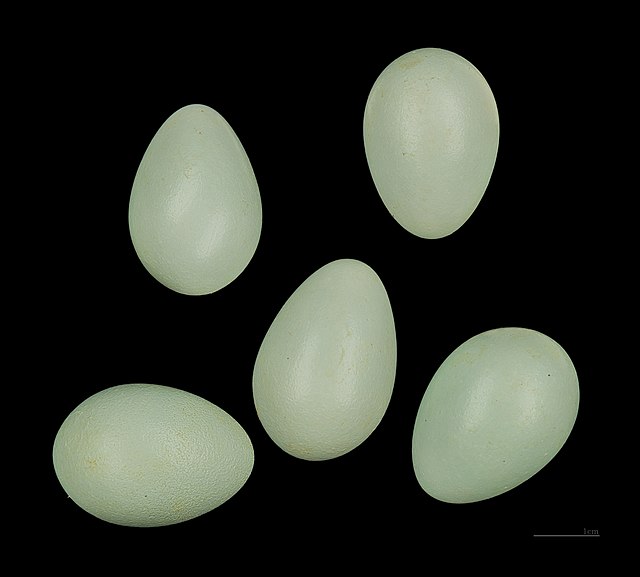The spotless starling is a passerine bird in the starling family, Sturnidae. It is closely related to the common starling, but has a much more restricted range, confined to the Iberian Peninsula, Northwest Africa, southernmost France, and the islands of Sicily, Corsica and Sardinia. It is largely non-migratory.
Image: Estornino Negro. Casa de Campo. Madrid (3)
Image: Sturnus unicolor male singing
Mating display of raising feathers
Eggs of Sturnus unicolor - MHNT
Starlings are small to medium-sized passerine birds in the family Sturnidae, common name of Sturnid. The Sturnidae are named for the genus Sturnus, which in turn comes from the Latin word for starling, sturnus. The family contains 128 species which are divided into 36 genera. Many Asian species, particularly the larger ones, are called mynas, and many African species are known as glossy starlings because of their iridescent plumage. Starlings are native to Europe, Asia, and Africa, as well as northern Australia and the islands of the tropical Pacific. Several European and Asian species have been introduced to these areas, as well as North America, Hawaii, and New Zealand, where they generally compete for habitats with native birds and are considered to be invasive species. The starling species familiar to most people in Europe and North America is the common starling, and throughout much of Asia and the Pacific, the common myna is indeed common.
Starling
The common starling (Sturnus vulgaris) has iridescent plumage.
The chestnut-tailed starling is a partial migrant over much of the east of its range, but its movements are poorly understood.
Micronesian starlings have been observed feeding on the eggs of seabirds.








